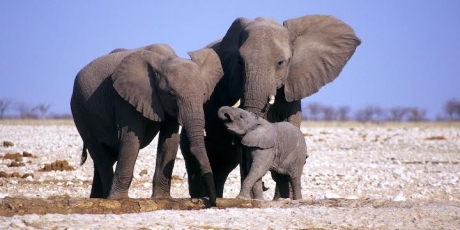- About
- Topics
- Picks
- Audio
- Story
- In-Depth
- Opinion
- News
- Donate
- Signup for our newsletterOur Editors' Best Picks.Send
Read, Debate: Engage.
| February 05, 2021 | |
|---|---|
| topic: | Conservation |
| tags: | #wildlife, #elephants, #climate change |
| located: | Botswana, Zimbabwe |
| by: | Bob Koigi |
After samples were tested, the government announced in a press conference that the elephants died after ingesting cyanobacteria, a set of toxic bacteria that are found in standing waters that usually form large blooms dubbed blue green algae.
The elephants died in a watering hole at Okavango Delta, an area that is famous for wildlife tourism. Post mortem results indicated that organs including the liver were inflamed, and conservationists termed the event one of the largest elephant deaths in history.
Aerial images revealed carcasses spread across water sources with some elephants seen as being disoriented and struggling to walk before collapsing face first.
Researchers are now sounding the alarm over the toxic blooms, which they say could be associated with climate change as the harmful bacteria prefers warm water. The Southern Africa temperatures have been rising at worrying trends reaching twice the global average in recent years.
There have been disagreements among scientists over the exact cause of the elephants’ deaths, with some questioning why no other wildlife species, including hyenas and vultures, that were feeding on the carcasses died. Another group of scientists argue that because of their size, elephants tend to consume more water and spend a lot of time bathing and drinking the water, which may have increased their vulnerability.
In August, an estimated 20 elephants were found dead in Zimbabwe, and some scientists say their deaths are related to the incident in Botswana.
Now researchers are worried that the toxic algae blooms are becoming a common occurrence globally, and could get more dangerous as climate change intensifies.
In Florida, an algae bloom that lasted 14 months killed an estimated 589 turtles, over 100 manatees and 127 dolphins with tonnes of dead fish found washed ashore.
The severity of the damage caused by the algae bloom continues to devastate marine life with life-long implications.
In South Africa’s west coast, a bloom contributed to low oxygen levels, leading to the death of 200 tonnes of rock lobster in 2015. The Florida fishing and tourist sectors have been on high alert after cases of toxic blooms were reportedly associated with the death of wildlife.
Over 300 cases of toxic algae blooms were recorded globally in 2018, with 130 of them having been listed in a database this year. Researchers posit that the number will rise even further as effects of weather vagaries continue to be experienced.
And as concerns mount on the new threat to wildlife and marine life, the headache for conservationists and wildlife experts is how to control further deaths, especially of elephants that are, at the moment, a threatened species.
For example, up to 30 percent of African elephants are already gone, with the continent losing 30,000 percent of them each year.
Angola, Tanzania, Mozambique and Cameroon are identified as the most affected countries, according to the pioneer pan African survey on savannah elephants. The unprecedented decline of the elephant population has seen them classified as a vulnerable species by the International Union for Conservation of Nature’s (IUCN) Red List.
“As the research community explores different hypotheses on the dangers of cyanobacteria on wildlife, there is consensus that the changing weather patterns combined with industrial agriculture where farmers are overusing fertilizers [...] [create] an environment for the toxic blooms to thrive through nutrient loading," said Dr. Mikael Ondieki, a Kenya-based conservationist, "[thereby] fanning the new strain of the deadly bacteria which if not checked could become a global catastrophe in the near future.”
Image by Leon Molenaar.
By copying the embed code below, you agree to adhere to our republishing guidelines.

